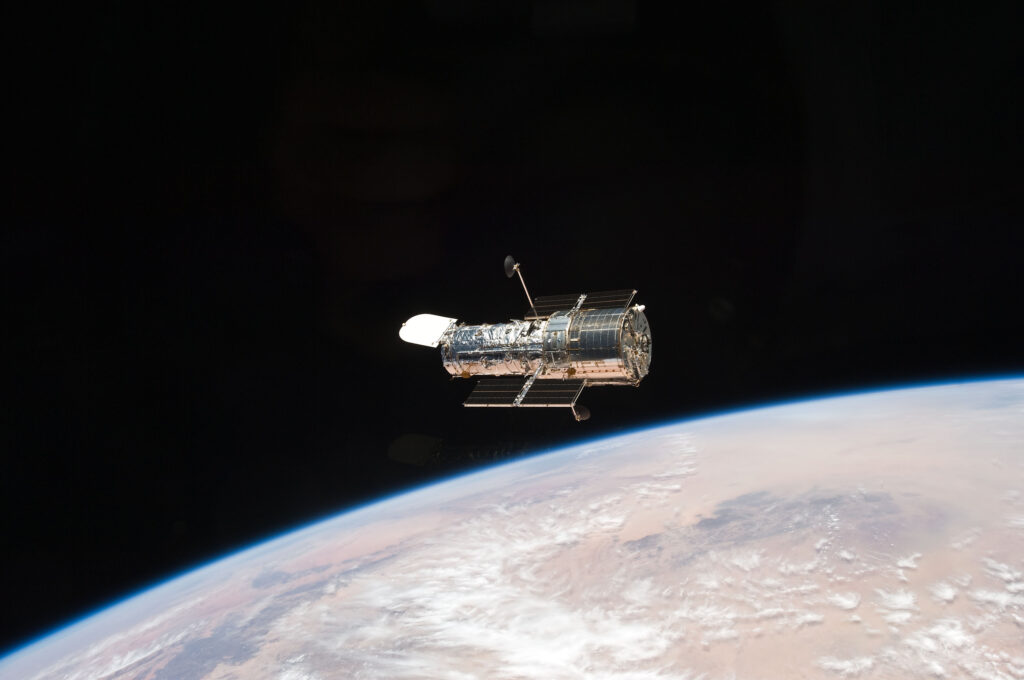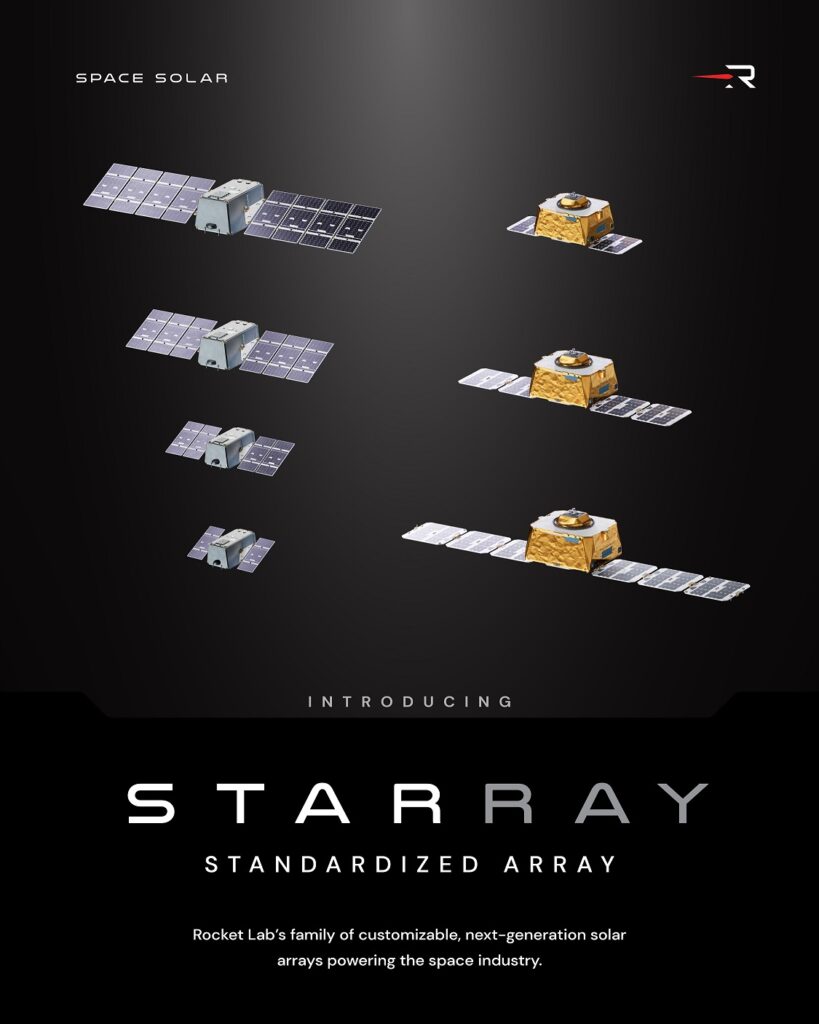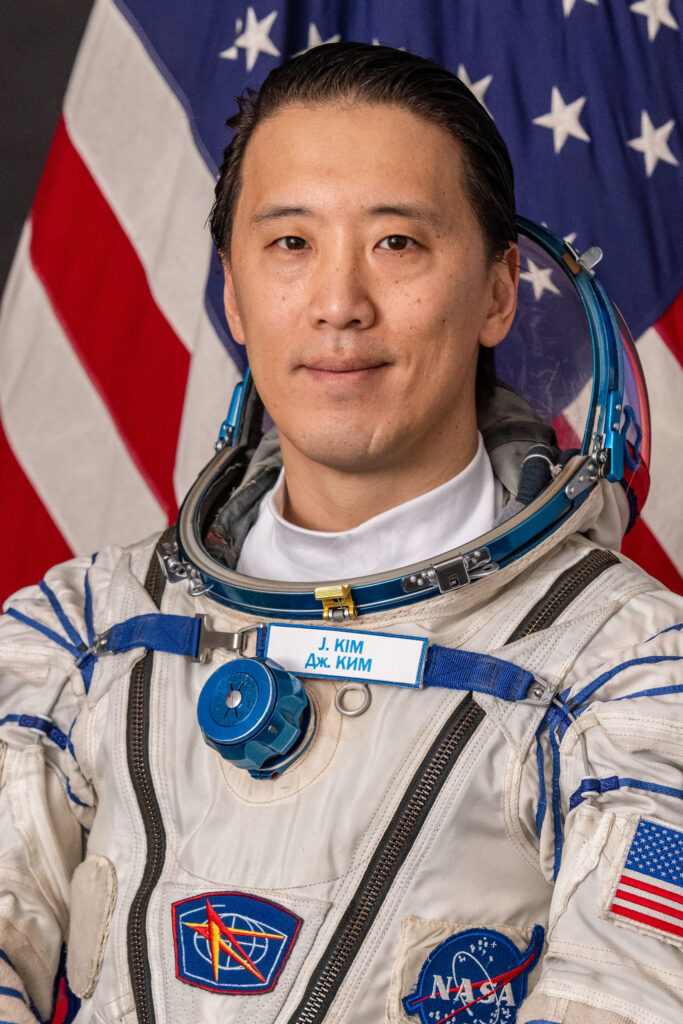For 35 years, the Hubble Space Telescope has served as humanity’s tireless eye in the sky, capturing breathtaking views of the cosmos and transforming our understanding of the universe.
The school-bus-sized observatory launched on April 24, 1990 and overcame early setbacks to become one of the most scientifically productive instruments in history. From its vantage point 320 miles (515 kilometers) above Earth, the telescope has sent home more than 1.6 million observations contributing to over 21,000 scientific papers.
The Hubble Telescope‘s legacy lies not just in its iconic visuals, but in how science-packed they typically are, providing astronomers with the data to measure the age and expansion rate of the universe, witness the birth and death of stars, uncover the fine structure of distant galaxies and much more.
“Every modern astronomy textbook includes contributions from Hubble,” a NASA blog post reads. The telescope’s longevity is a testament to the ingenuity of its designers and the dedication of the teams and astronauts that have maintained and upgraded it over the years.
To celebrate Hubble’s 35th anniversary, Space.com is revisiting some of the most scientifically significant — and awe-inspiring — images of the universe captured through its lens.
Related: Hubble Space Telescope: Pictures, facts & history
1. Cosmic mirage confirms theory of general relativity (1990)
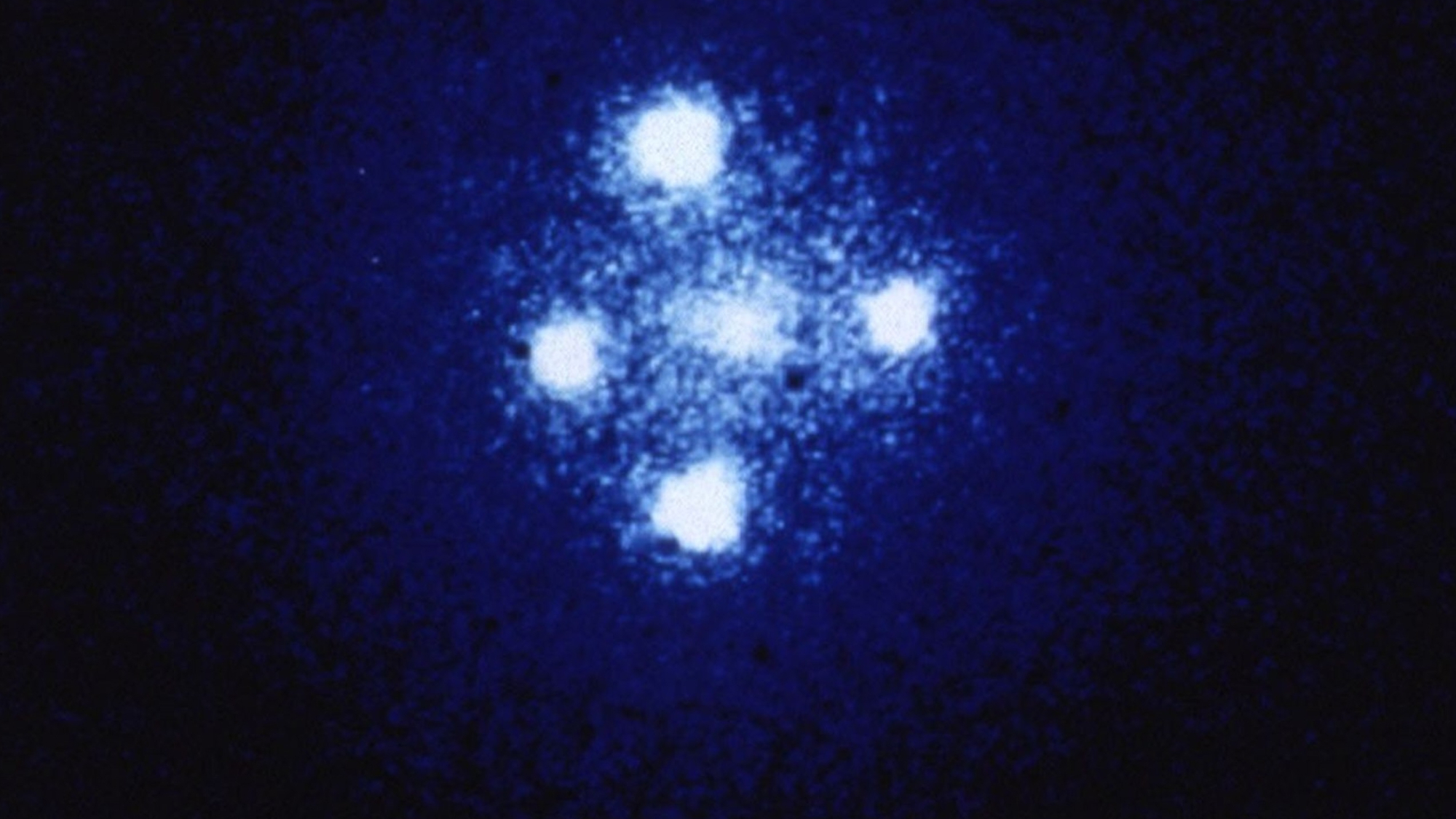
In September 1990, five months after its launch, Hubble captured a striking example of gravitational lensing: The light from a distant quasar, Q2237+0305 — located about 8 billion light-years away — was bent and magnified by the gravity of a much closer galaxy, ZW 2237+030, approximately 400 million light-years from Earth.
This effect produced four distinct images of the same quasar in a cross-like pattern around the central galaxy, often referred to as an Einstein Cross. This phenomenon occurs when the gravity of a massive object, such as a galaxy or galaxy cluster, bends and amplifies the light of objects positioned behind it. These cosmic lenses act as natural telescopes, magnifying the light from distant objects that would otherwise be too faint to study in detail.
In the case of the quasar Q2237+0305, the complex gravitational field of the intervening lensing galaxy caused the quasar’s light to travel along multiple paths, resulting in the multiple-image phenomenon predicted by Einstein’s theory of general relativity. Ground-based telescopes at the time struggled to resolve such fine detail, but Hubble’s sharp vision revealed the four distinct quasar images clearly, showcasing its power to observe faint and distant objects in high resolution.
Beyond its visual impact, the Einstein Cross allowed astronomers to study the distribution of mass — including dark matter — in the lensing galaxy. Since dark matter does not emit light, its presence and distribution can only be inferred by how it influences the bending of light. By analyzing the shape and brightness of the lensed images, astronomers could begin mapping both visible and dark matter in the foreground galaxy, furthering our understanding of galaxy structure and the large-scale properties of the universe.
2. 1st conclusive evidence of black holes at galactic centers (1994)
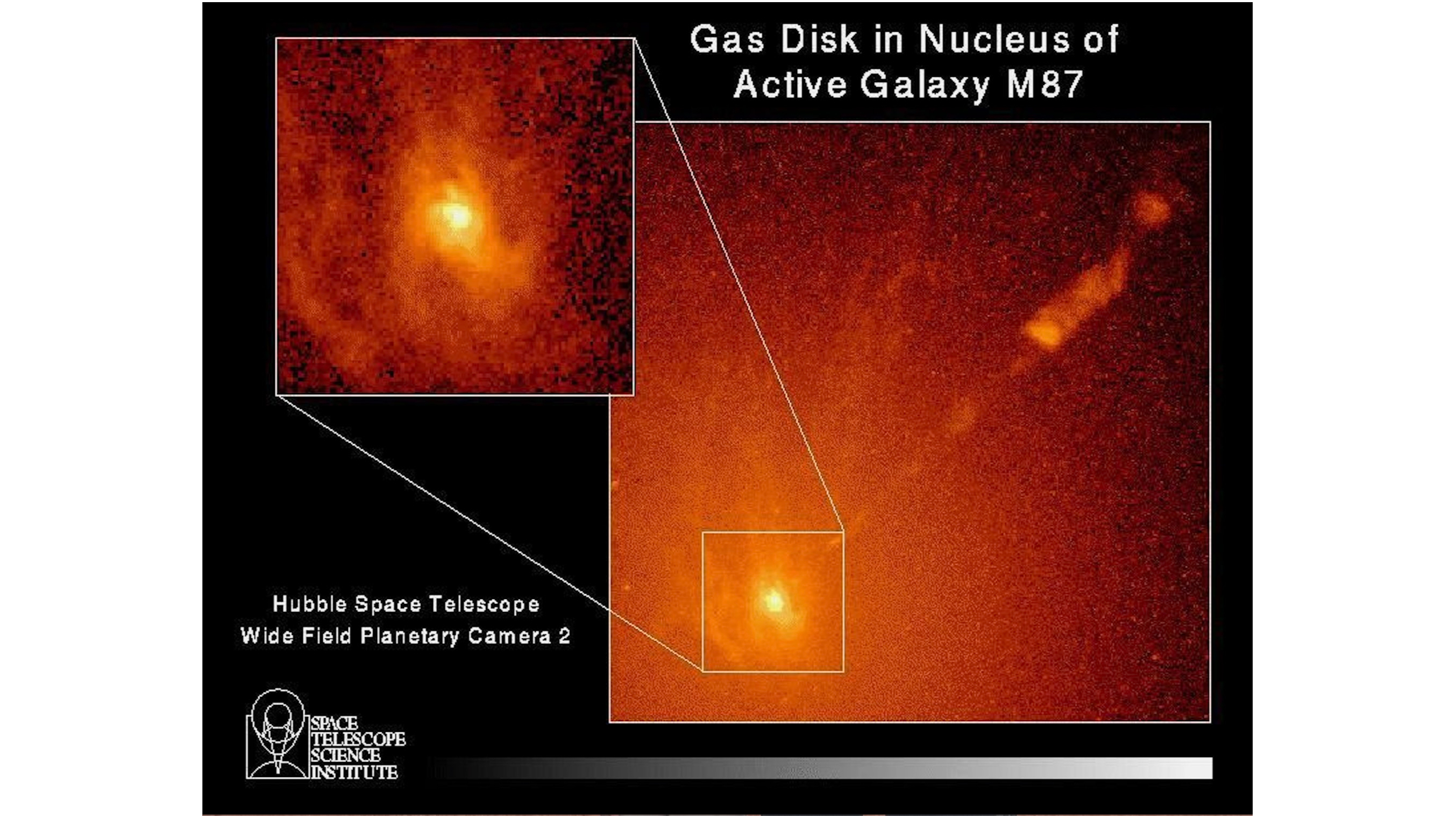
In May 1994, the Hubble telescope measured the velocity of a whirlpool of hot gases circling around a suspected black hole at the heart of the M87 galaxy, located about 50 million light-years away in the constellation Virgo.
Astronomers observed the hot, ionized gas to be swirling around a compact object at the galaxy’s center at a speed of about 1.2 million mph (1.9 million kph). They calculated the unseen object’s mass to be around two to three billion times that of the sun — far too massive to be explained by anything other than a supermassive black hole.
This observation provided the first conclusive evidence for the existence of the cosmic behemoth at the core of a galaxy. Although the concept of black holes had existed for decades, Hubble’s precise measurements offered compelling observational proof that moved black holes from theoretical predictions into reality.
Related: Black holes: Everything you need to know
3. Hubble Deep Field unveils the early universe (1995)
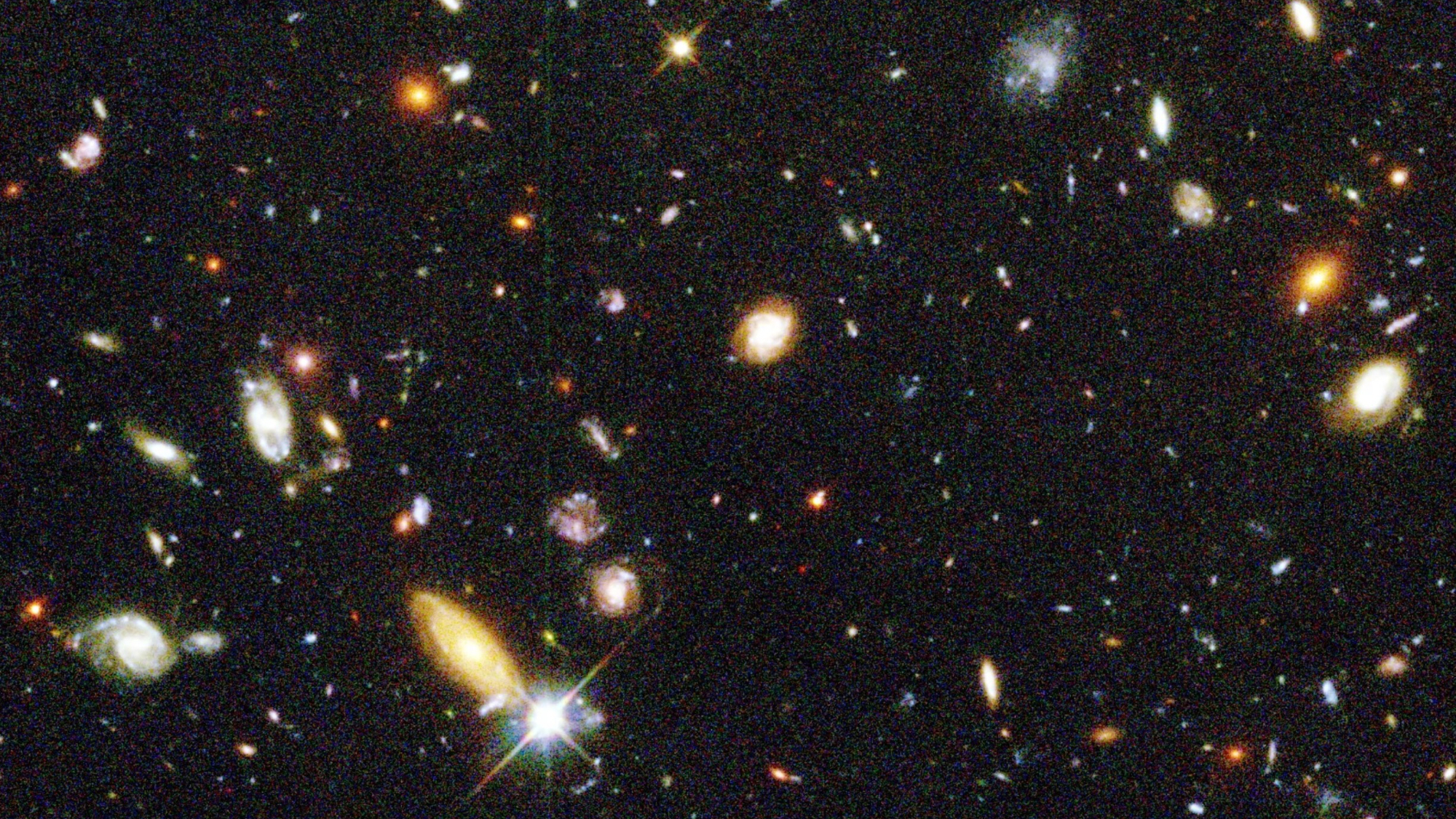
For 10 consecutive days in December 1995, astronomers pointed the Hubble Telescope at a seemingly barren patch of sky, an area no larger than a pinhead held at arm’s length. The resulting Hubble Deep Field image revealed about 3,000 distant galaxies, offering humanity’s first profound look into the universe’s true immensity and revealing a cosmos teeming with galaxies, even at extreme distances.
Initially, skepticism surrounded Hubble’s ability to surpass ground-based telescopes in observing distant galaxies, with some experts predicting limited new discoveries. However, the “cosmic zoo” hinted at in early Hubble images inspired Robert Williams, then director of the Space Telescope Science Institute, to dedicate his discretionary observation time in 1994 to targeting a seemingly empty, dark region in Ursa Major.
The Hubble Deep Field revealed galaxies at progressively earlier stages of evolution the farther away they appear in the image, allowing astronomers to begin studying how small, irregular infant galaxies morphed into the grand spirals and ellipticals observed today.
Building on this milestone, astronomers sought a similar deep view of the southern sky, leading to the Hubble Deep Field South in 1998. This effort, a 10-day observation eyeing the constellation Tucana, revealed thousands more distant galaxies, confirming the universe’s uniformity on a large scale.
Later, the Hubble Ultra Deep Field was compiled from nearly a million seconds of exposure time between 2003 and 2004 in the constellation Fornax, capturing an estimated 10,000 galaxies that revealed some of the earliest galaxies to form in the universe, as soon as a few hundred million years after the Big Bang.
4. A peek at star birth in cosmic cathedrals (1995)

Hubble’s iconic “Pillars of Creation” image captures towering columns of interstellar gas and dust within the Eagle Nebula (M16), which spans 4 to 5 light-years and is located about 7,000 light-years from Earth in the constellation Serpens.
The wispy columns of gas and dust are illuminated by intense ultraviolet radiation from nearby young, massive stars. These majestic structures — resembling colossal rock formations — are stellar nurseries, where new stars are actively forming within dense knots of gas.
This original image, along with several follow-up observations, provide detailed snapshots of star formation in action, allowing astronomers to study how stellar winds and radiation from newborn stars sculpt these pillars, influencing the birth — and suppression — of future stars. By analyzing the colors and structures within the dust cocoons, scientists infer the composition, density and temperature of the gas and dust — crucial insights into the conditions necessary for stars to ignite.
5. Tracing a light echo (2002-2004)
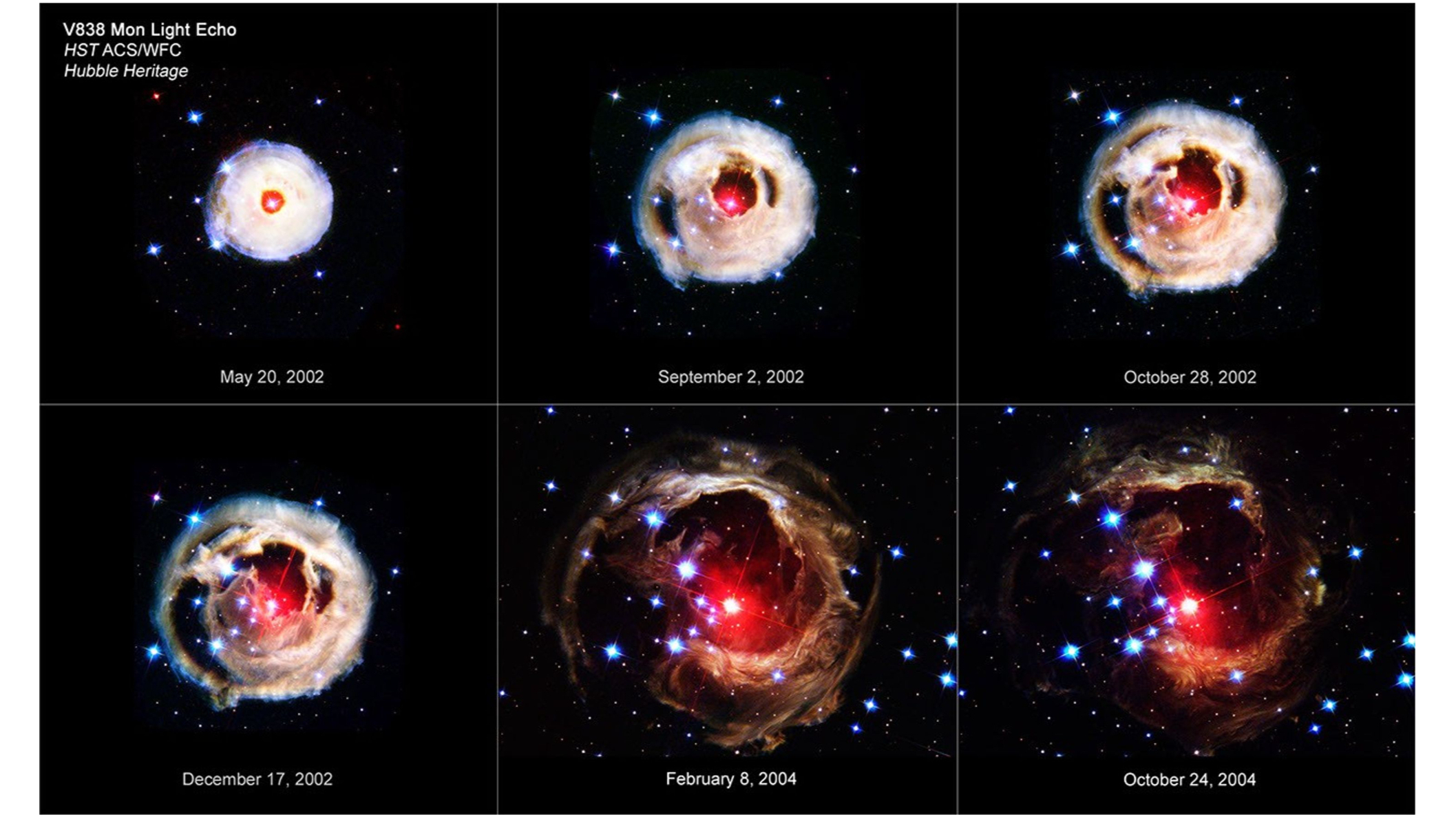
In early 2002, a star named V838 Monocerotis, located about 20,000 light-years from Earth in the constellation Monoceros, suddenly brightened to 600,000 times the luminosity of our sun — briefly outshining every other star in the Milky Way. Hubble captured this dramatic event in a stunning series of images, revealing intricate dust patterns as a flash of light from the outburst expanded outward and reflected off surrounding dust clouds — a phenomenon known as a light echo.
Gathered between May 2002 and October 2004, Hubble’s observations of the star allowed astronomers to directly measure the star’s distance, map the structure of its circumstellar dust and investigate the unusual nature of the stellar eruption.
Over time, Hubble’s repeated imaging of the light echo revealed a constantly changing display as each observation captured light reflecting off progressively more distant layers of dust. As the initial burst of light from the outburst traveled outward, it illuminated different “slices” of the surrounding dust cloud at different times, creating a dynamic, evolving pattern in Hubble’s images and revealing the three-dimensional structure of the dust shells around the star.
6. Charting a safe course through Pluto’s neighborhood (2005)
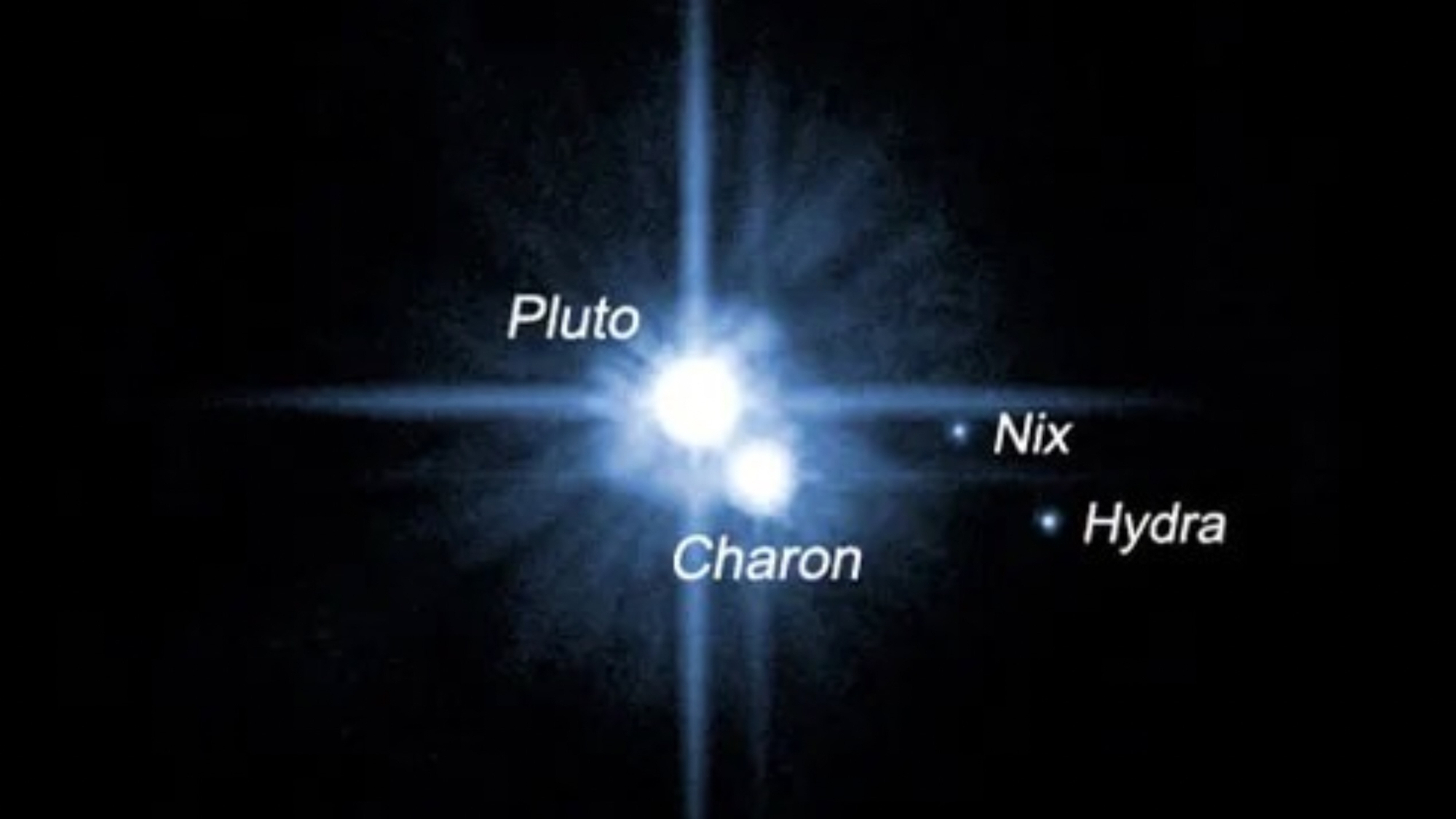
Hubble’s observations of Pluto starting in 1996 revealed that the dwarf planet is not just a homogenous ball of ice but rather possesses a surprisingly complex and varied surface with distinct bright and dark regions.
“Without Hubble’s early images revealing how interesting Pluto’s surface markings are, there might have never been a mission to explore this fascinating dwarf planet,” Alan Stern, principal investigator of NASA’s New Horizons mission, said in an agency statement.
This data provided pre-arrival knowledge about Pluto’s surface and its satellite system for New Horizons, which flew by the Pluto system in July 2015. In the years leading up to the 2006 launch of New Horizons and throughout its long journey, Hubble provided the most detailed images of Pluto’s surface ever captured from Earth orbit.
Just as critically, Hubble discovered four of Pluto’s small moons — Nix, Hydra, Kerberos and Styx — which helped mission planners chart a safe course for New Horizons, ensuring the spacecraft avoided any potential collisions with these newly identified objects.
Finally, in 2014, as the New Horizons team explored the possibility of an extended mission into the Kuiper Belt after the Pluto flyby, they turned to Hubble’s powerful capabilities to identify their next target by surveying faint, distant objects in the outer solar system.
The telescope identified three potential targets in the Kuiper Belt about a billion miles beyond Pluto’s orbit, one of which scientists selected — 2014 MU69, briefly nicknamed Ultima Thule — as the next destination for New Horizons’ flyby in January 2019. NASA later officially renamed the space rock Arrokoth, which to date remains the farthest object ever explored — one that likely tastes sweet and soapy.
Related: New Horizons: Exploring Pluto and beyond
7. Asteroid smashup reveals mysterious X-shaped structure (2010)

In 2010, the Hubble Space Telescope captured the first direct images of a suspected asteroid collision in the asteroid belt between Mars and Jupiter, revealing a peculiar X-shaped object leading a comet-like trail of debris.
Astronomers tracked the object, dubbed P/2010 A2, for five months starting in January 2010, initially believing they were witnessing a recent impact. However, further analysis indicated the collision likely occurred in early 2009 within the asteroid belt. Yet, for reasons not fully understood, the debris field was expanding surprisingly slowly, the complete opposite of the dramatic pace astronomers expect from such a violent event.
The X-shaped structure at the head of the tail, a never-before-seen feature from an asteroid collision, suggested that the impact between two previously unknown, modestly sized asteroids was not perfectly symmetrical. The X-shape itself likely played a role in particles dispersing very slowly, according to a NASA statement.
“Once again, Hubble has revealed unexpected phenomena occurring in our celestial backyard,” Eric Smith, Hubble Program scientist at NASA Headquarters in Washington, said in a different statement. “Though it’s often Hubble’s deep observations of the universe or beautiful images of glowing nebulae in our galaxy that make headlines, observations like this of objects in our own solar system remind us how much exploration we still have to do locally.”
8. The tale of the multi-tailed asteroid (2013)
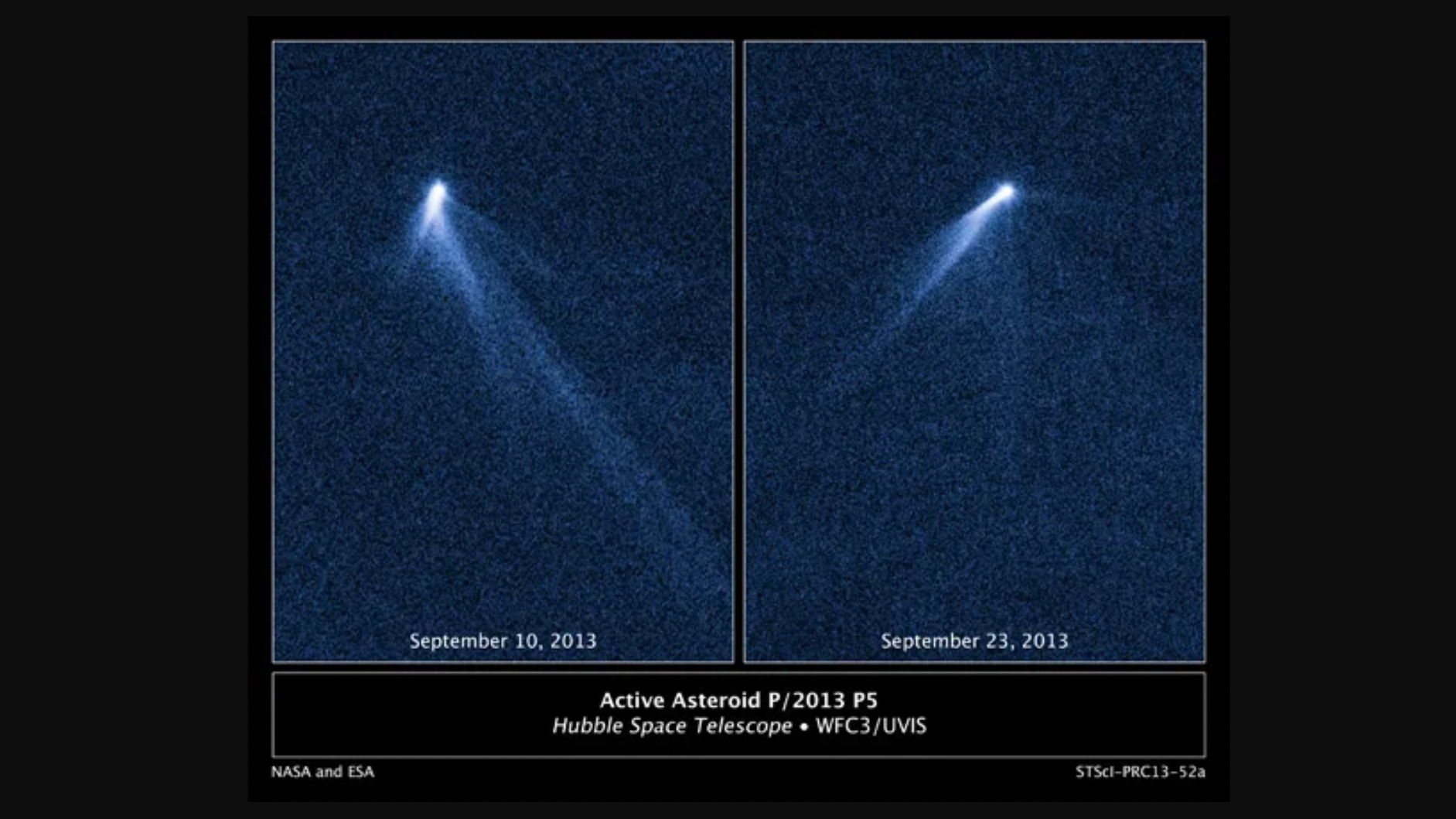
In September 2013, the Hubble telescope discovered never-before-seen comet-like tails emanating from a space rock in the main asteroid belt.
The asteroid, known as P/2013 P5, sported six distinct dust tails, and its appearance had significantly changed within two weeks, like a cosmic lawn sprinkler. “It’s hard to believe we’re looking at an asteroid,” David Jewitt of the University of California at Los Angeles said in a NASA statement. “This is just an amazing object to us, and almost certainly the first of many more to come.”
The leading explanation is that the asteroid itself is a fragment of a larger space rock that broke apart in a collision about 200 million years ago. P/2013 P5’s rapid rotation, possibly accelerated by sunlight, caused dust to be ejected from its surface, forming multiple tails as the dust was pushed by solar pressure.
9. Monitoring the aftermath of DART’s asteroid impact (2022)
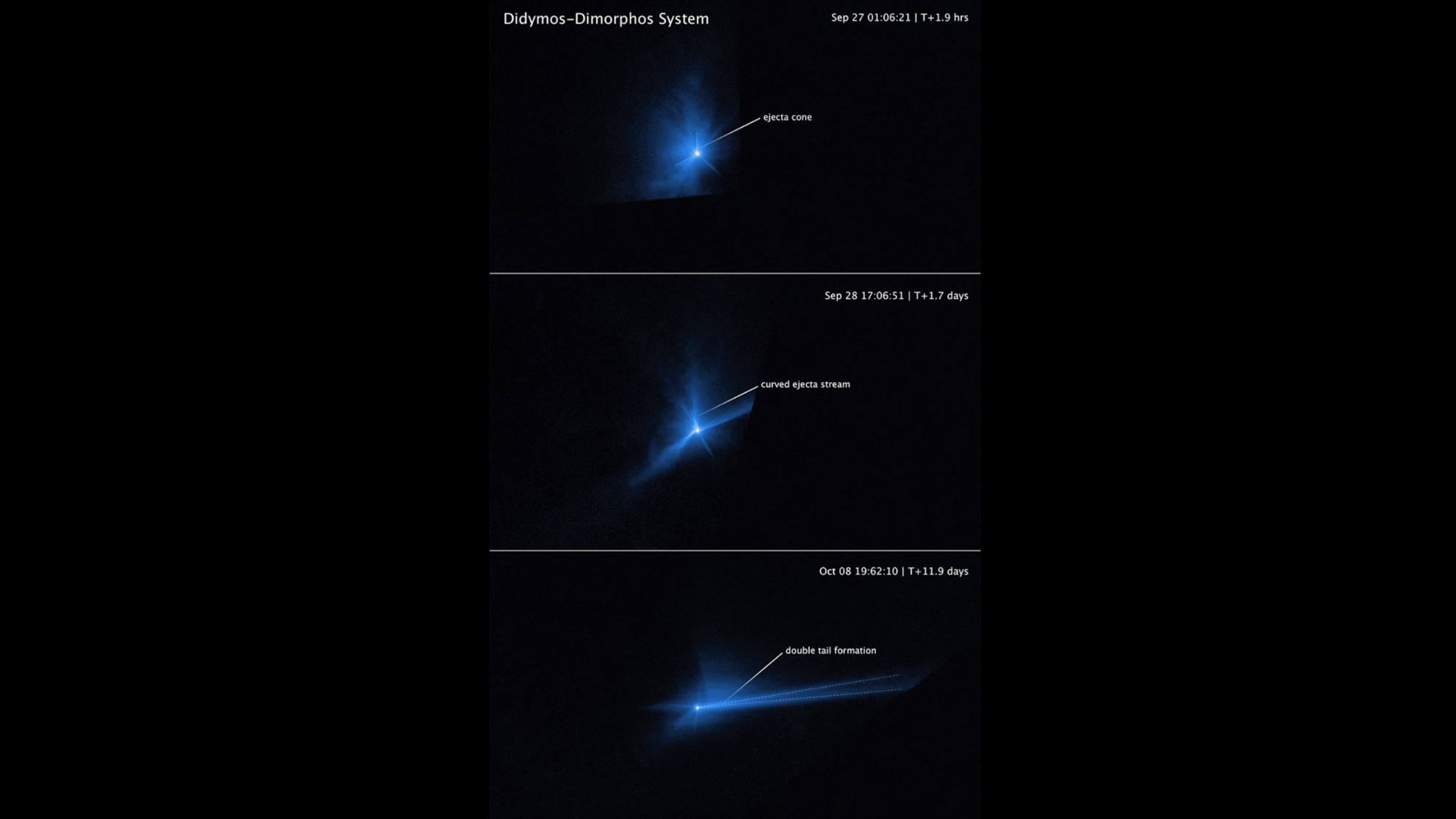
When NASA’s Double Asteroid Redirection Test (DART) spacecraft intentionally collided with the asteroid Dimorphos in September 2022, the Hubble telescope was watching.
Over several days, Hubble captured a striking series of images documenting the immediate aftermath and the evolving debris cloud unleashed by DART’s 13,000-mph (21,000 kph) strike. Remarkably, the observatory even recorded the asteroid’s tail splitting in two. A time-lapse of the event revealed how tons of dust and rock were blasted into space, forming a dramatic ejecta cone.
These detailed observations are helping scientists better understand the physics of asteroid impacts, the behavior and spread of ejected material and the overall effectiveness of kinetic impact as a method for planetary defense.
Related Stories:
10. Panoramic view of the Andromeda galaxy (2025)
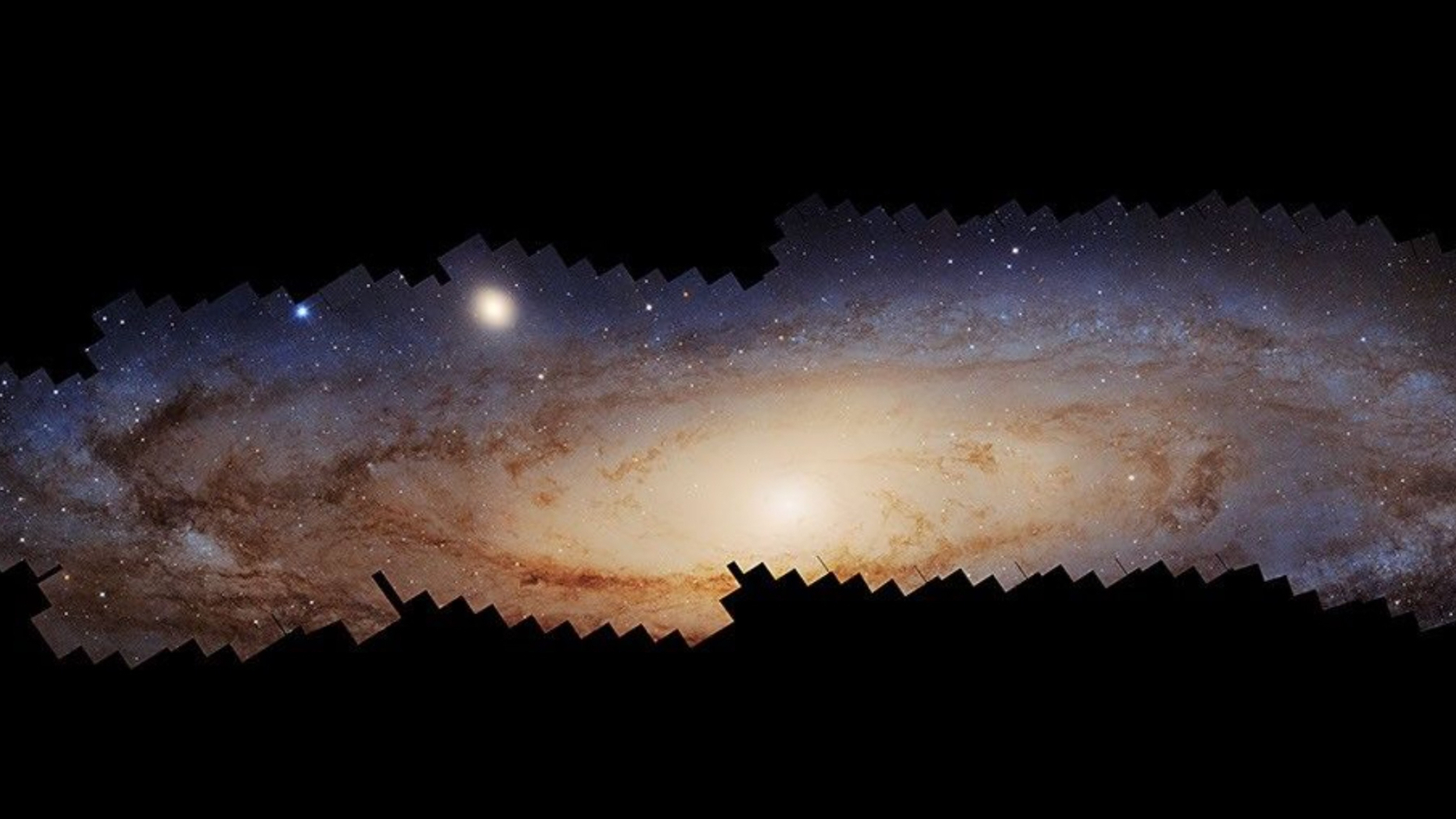
In early 2025, astronomers announced that they had completed a decade-long effort to create the most detailed panoramic image of our neighboring galaxy, Andromeda. Built from Hubble Space Telescope images, the full portrait offers an unprecedented view that could transform our understanding of how spiral galaxies form and evolve.
An earlier version, released in 2015, focused on the northern half of the Andromeda galaxy, capturing 100 million stars in a sweeping 1.5-billion-pixel mosaic. The newly completed panorama builds on that, adding another 100 million stars from the galaxy’s southern half.
“It’s like photographing a beach and resolving individual grains of sand,” Zhuo Chen of the University of Washington said during a press briefing. “This is the first time that we can see such detailed structures for an external galaxy.”
Beyond its stunning beauty, the new Andromeda panorama is a powerful scientific tool that will help astronomers unravel the galaxy’s turbulent past and test galaxy evolution models — particularly its mergers with smaller satellite galaxies.

